Lettuce leaves
A handful on your plate, for hardly any effort
Growing lettuce leaves should be at the top of every gardeners list. It’s so simple, cheap and hassle free that it’s a no brainer.
It also makes a meal feel healthier if you have a handful of green on the side, not to mention the pride you’ll feel knowing that you grew it yourself.
They in pretty much anything from a bucket to a icecream tub, so long as you have a little space and some soil.
This is a week by week diary of the growing, maintenance and harvesting two different types of lettuce leaves.
Quick tips
- Sow 3-4 seeds into each module of a seedling tray
- Grows quickly and can be harvested within 40 days
- Seeds can be sown from March → July directly outdoors
- Grow garlic chives, spring onions and spinach nearby for a simple salad
Dates
To get lettuce leaves through the summer, use the following dates:
| Jan | Feb | Mar | Apr | May | Jun | Jul | Aug | Sep | Oct | Nov | Dec | |
|---|---|---|---|---|---|---|---|---|---|---|---|---|
| Sow | O | O | O | O | O | |||||||
| Harvest | H | H | H | H |
Pests
Lettuce leaves are susceptible to the following pests:
Types of lettuce
For a little colour I’m growing “Lollo Rossa”, which can be found here from Thompson & Morgan or here from Mr.Fothergills

Watch it
I have compiled the growing diary for lettuce leaves into a short video for you:
Growing diary
I started this diary, and sowed these seeds, on the first week of May (19th week of the year).
Week 1: Sowing
Sowing lettuce seeds is similar to many other leafy greens. First start by filling your chosen seed tray (I used the 84 cell tray as I had sown other veg at the same time) with a seed, or general, compost. You don’t need to press too firmly, the seedlings have an easier time pushing down their roots if it’s a little fluffy. Make sure each module is full and there aren’t any air pockets.
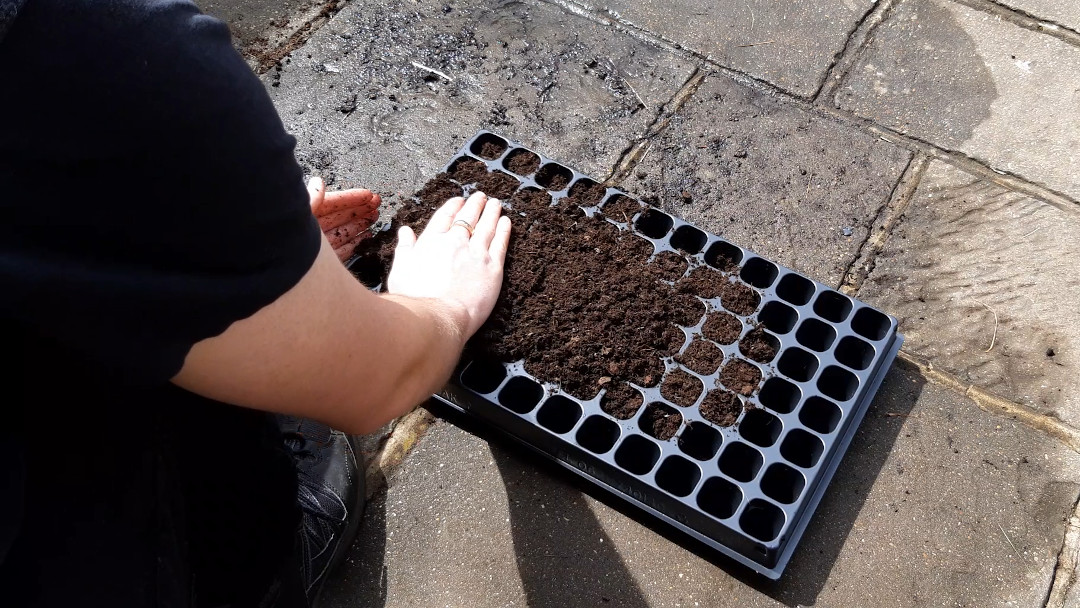
Next, water thoroughly or sit the tray in water to allow the compost to soak up as much water as possible. This’ll ensure the seedlings have a good starting drink to get them going and will mean the compost wont dry out too quickly.
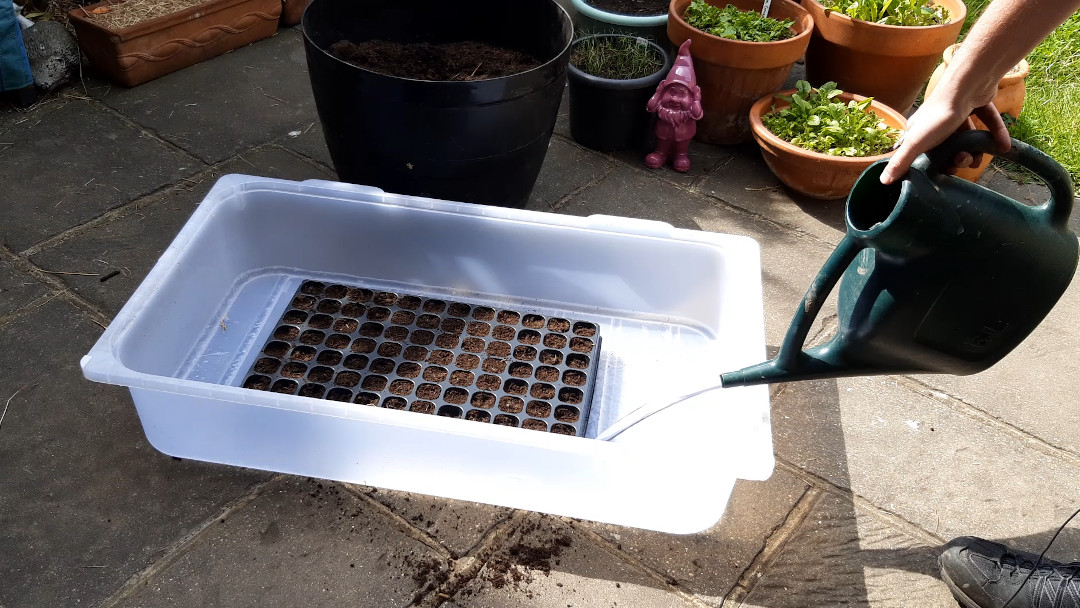
As you get so many seeds in each packet, for best results with germination, I would recommend sowing 3-4 seeds per cell. We’ll thin out the weakest seedlings later.
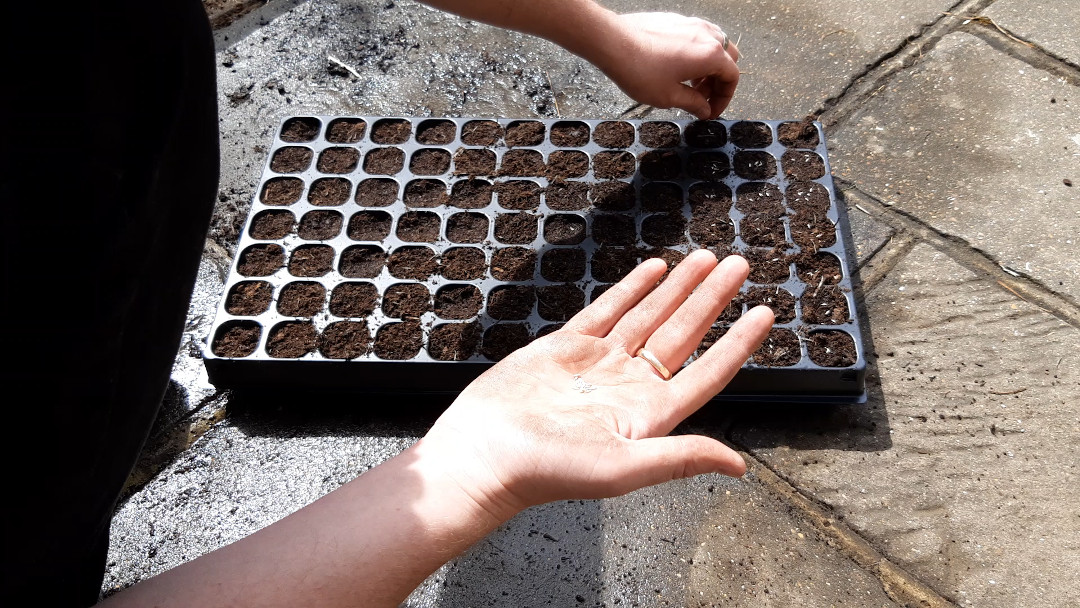
Sprinkle a little compost over the seeds, patting down gently and making sure the seeds are covered. Lastly, give them a splash of water.
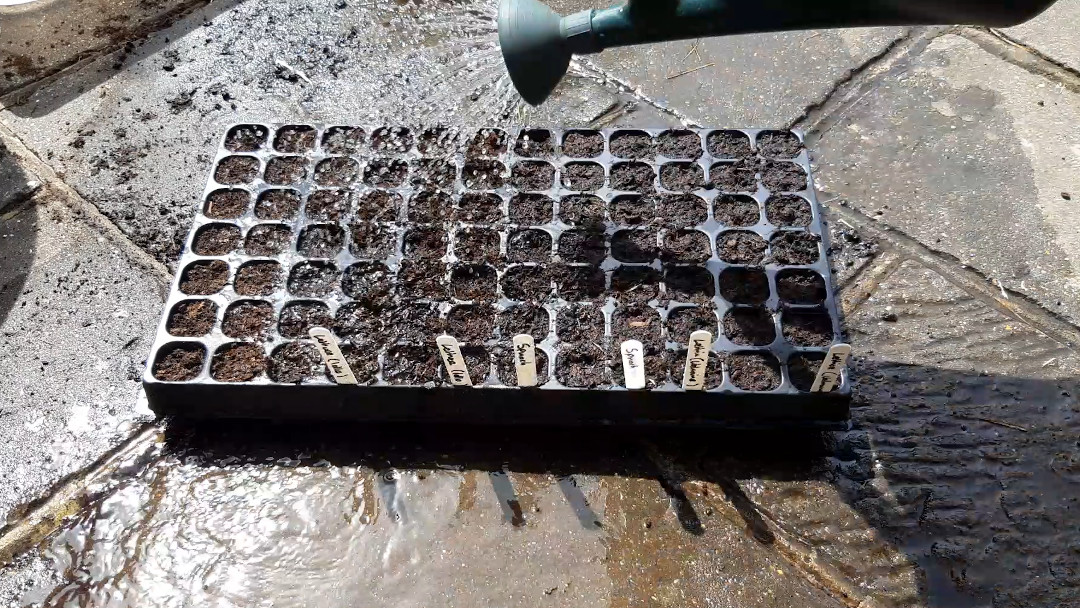
Put your label in place so you remember what you have planted.
Tip: Instead of writing a label for each column of your seed tray, write two and put them in the outermost columns that you used. If you always do this, you know that everything between the labels is the same.
If you’re getting your seedlings going indoors, put this on a sunny windowsill. If, like me, you’re growing in a grow tent (which I would recommend) then this tray can go near the bottom as the seedlings don’t need light yet.

Week 2: Starting to germinate
Lettuce takes between 5-10 days to germinate and in a warm environment, you may already see seedlings poking out the compost by week 2.

Week 3: Good germination
By now, you should have pretty consistent germination across all cells. If they’re starting to lean towards the light, raise the tray up to the highest level in the growhouse and turn it every few days so the seedlings grow upright.
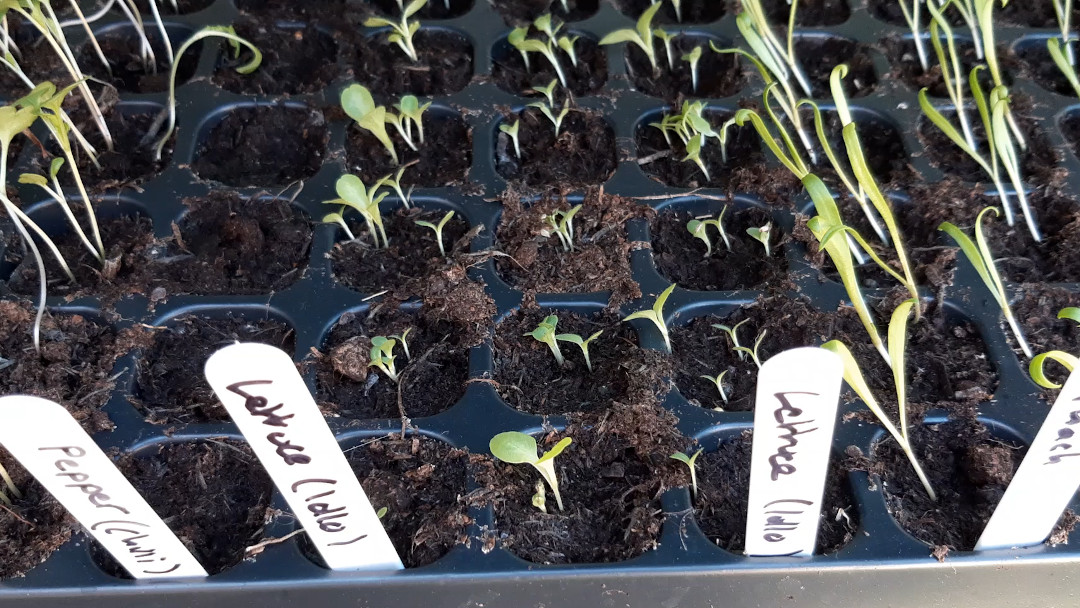
Week 4: Growing nicely
Hopefully your seedlings are looking healty and strong. They should be ready to go into their forever home.
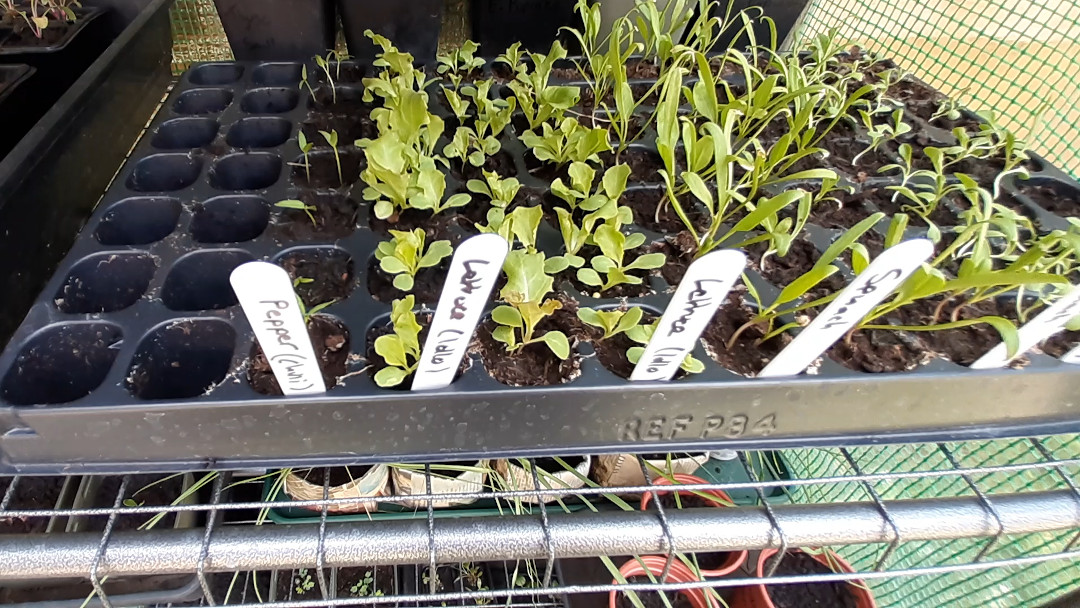
Lettuce will be happy in small pots, large pots, window boxes or straight in the ground. I used a window box outside our kitchen window, where they’ll be safe from pests and easier for me to harvest.
Fill container with soil
I used a 1:1 mix of topsoil and compost for the potting soil. For more information, please check my post on soil.
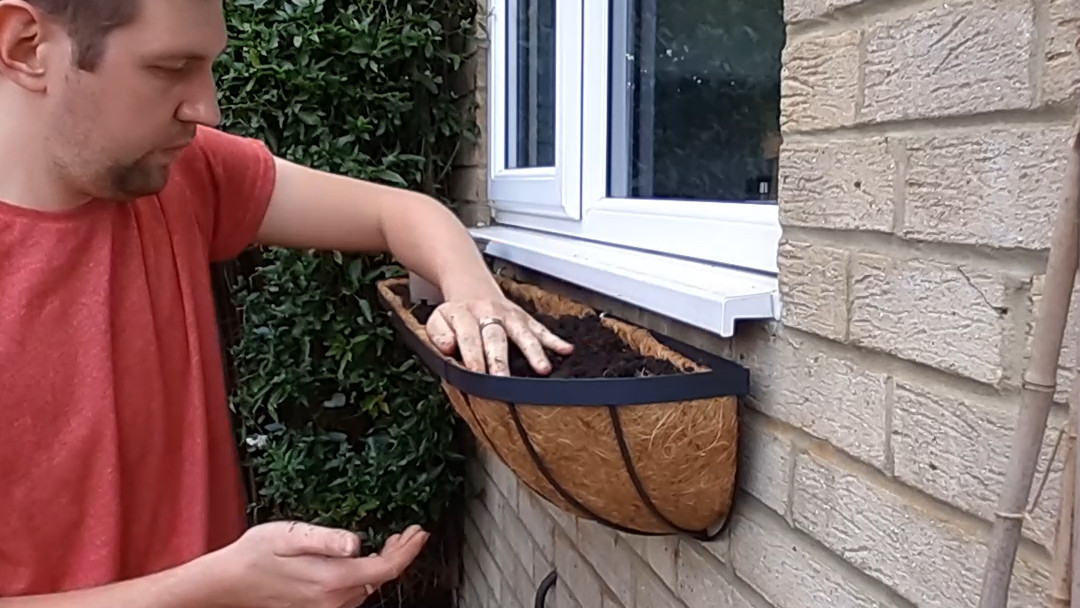
Press the soil down and give it a little water to hold the soil together while transplanting.
Make the holes
This is my favourite bit. Using a dibber (make your own if you don’t have one, it makes transplanting much easier), make a two inch deep hole for each seedling.
If you have a dibber, the lines on it are spaced an inch apart for reference

Ease pods from cell
Using the flat end of a pencil, poke out the pod from the cell using the hole in the bottom. If this is a little tricky, water the soil first so it holds together.
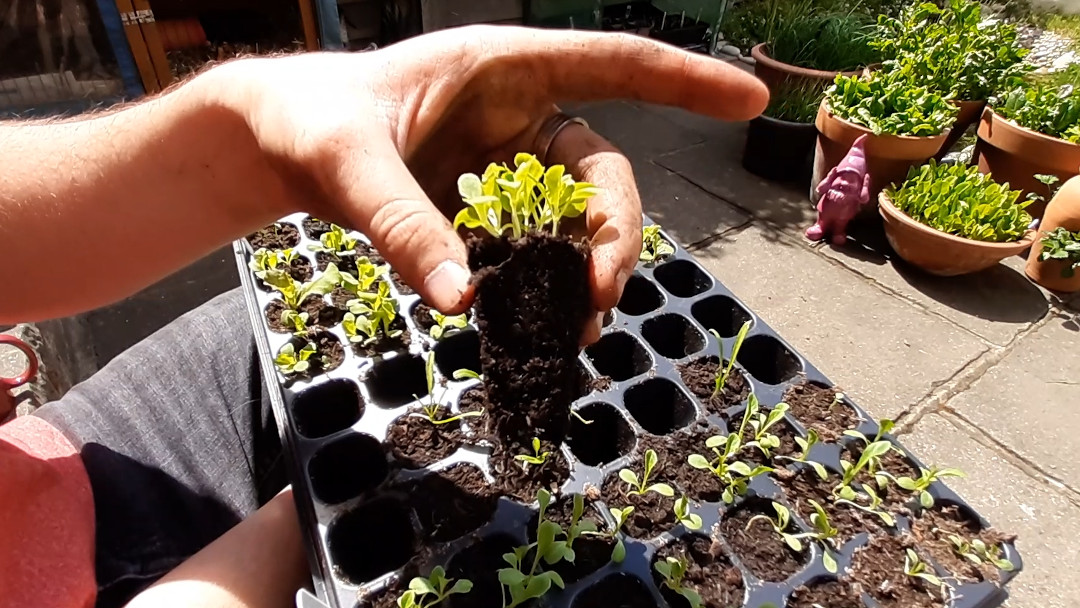
Transplant
Place each pod into each hole and press down so the top of the cell is flush with the top of the soil. Place your fingers either side of the stem and gently push down.
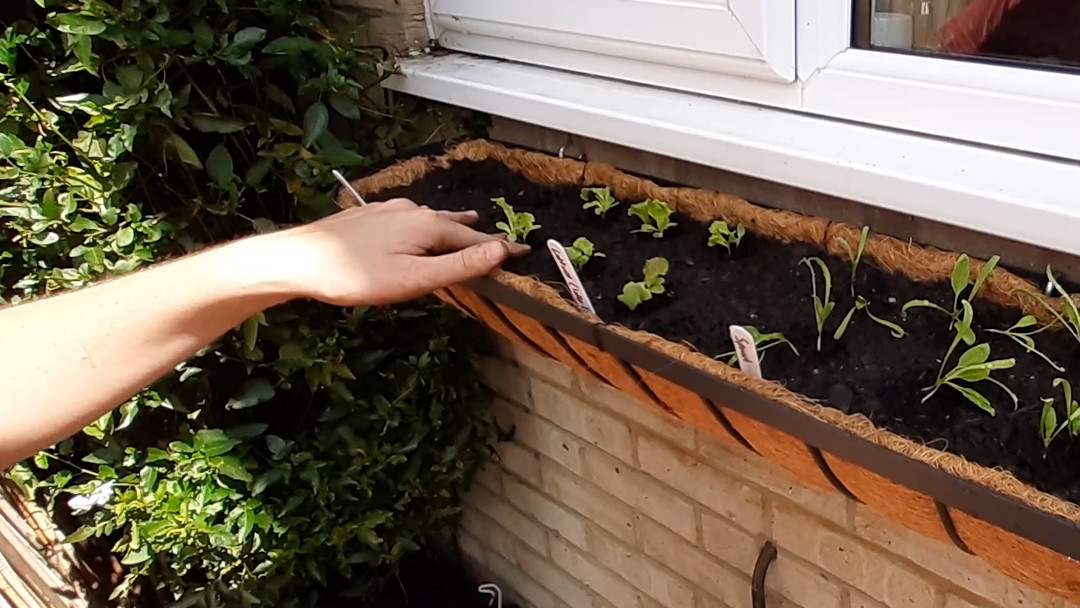
Water
Lastly, give them a really good water. Transplanted seedlings can get shocked by being moved and their roots disturbed. We limit this by using a similar soil in both the tray and the pot and by watering the roots in well after moving them.

Week 5: Bulking up
Your lettuce should now be doubling in size each week.
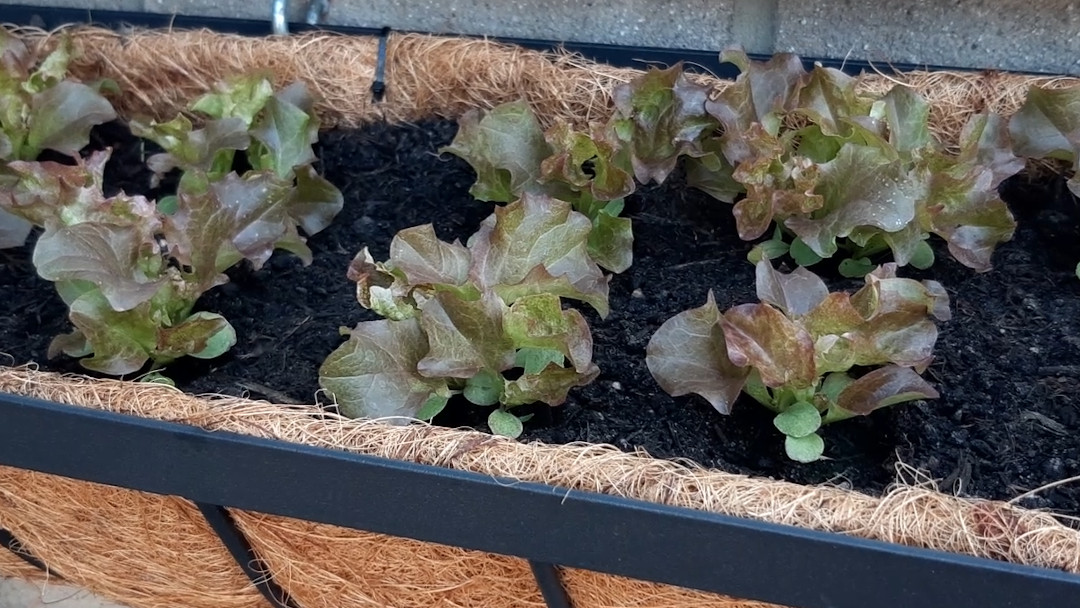
Be careful to keep it well watered to stop the soil drying out.
Week 6: Enjoying a rest from the heat
This lettuce has powered through a few weeks of intense sun, though now has some overcast days and a little more rain. The lettuce should be growing nicely and filling its new home.
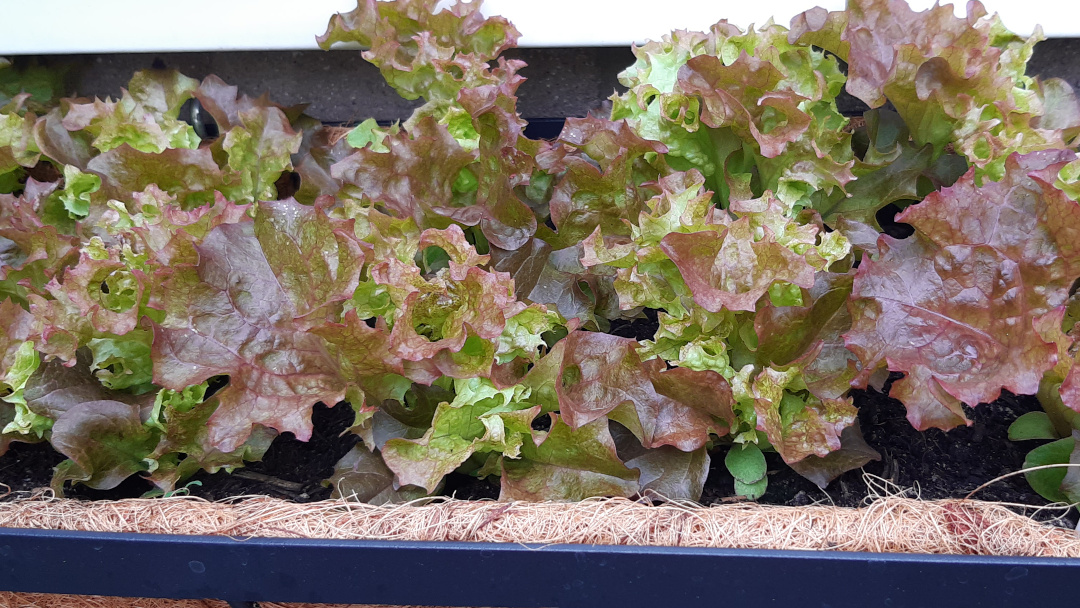
Keep an eye out for slugs & snails which would find this a very enticing meal.
Week 7: It’s ready!
Seven week from seed to side salad. These lettuce leaves didn’t require much care or attention and will give us a couple of months of leaves.
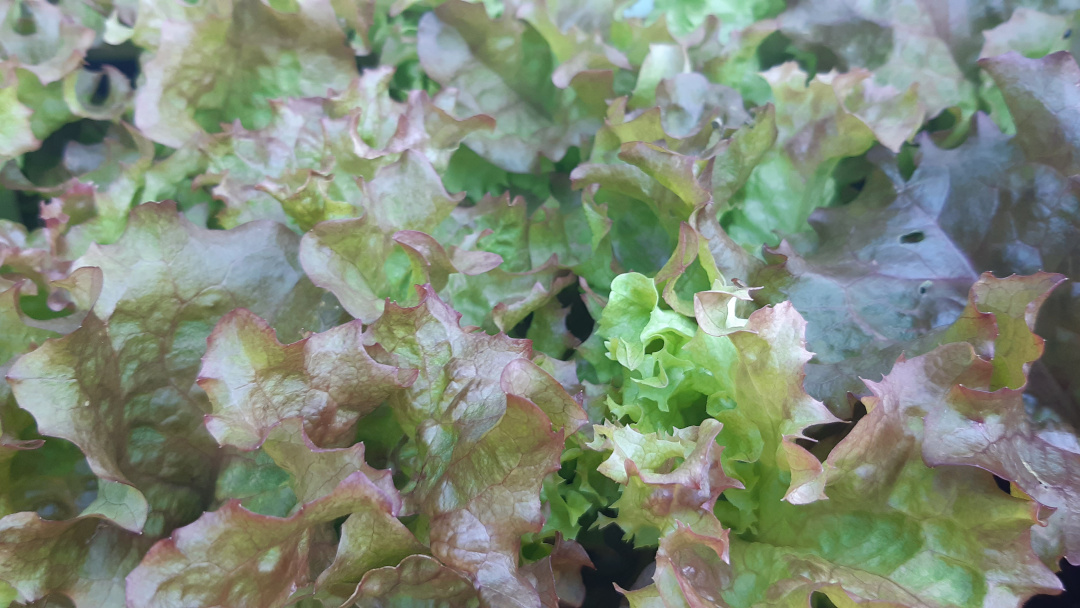
You could leave these plants a few more weeks to develop that deep crispy look but I prefer to start harvesting lettuce earlier.
Not only does it keep the plant compact, it also lets more light through to the other plants which allows them to grow and replace the ones you’re harvesting.
I find it prolongs the harvesting period.
As these leaves took two months to grow, you should consider sowing more now to replace these in a couple of months time.
Harvesting
Harvesting is very straight forward. Get yourself a bowl and small pair of scissors if you have them.
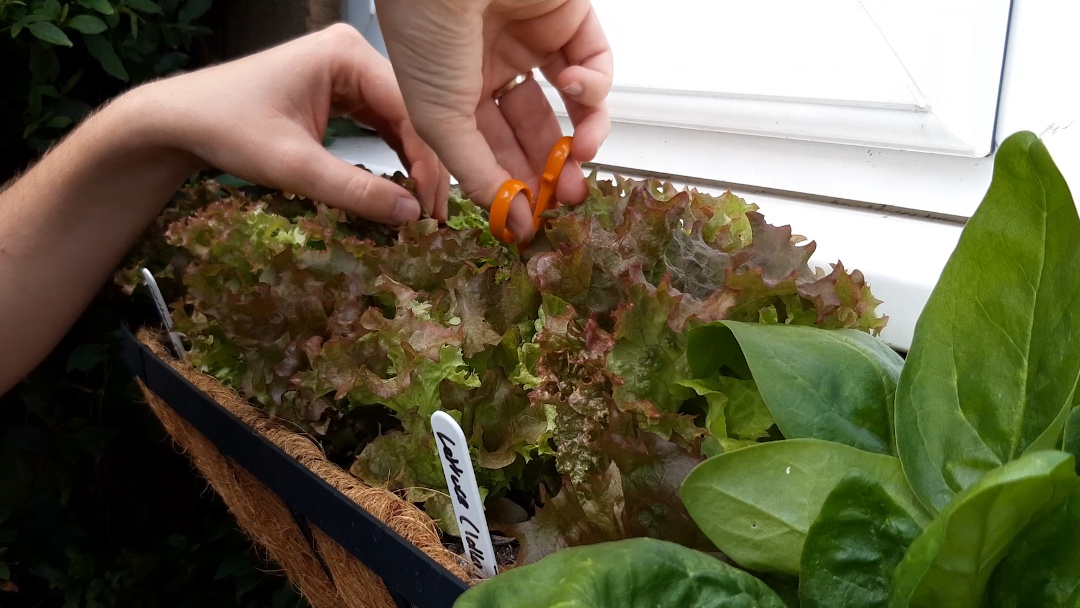
Take the largest leaf from the strongest plants. We take the largest because:
- It allows more light to get to the rest of the plant
- They are larger so we don’t need to harvest as many, leaving more for the plant to grow
- The largest have the most flavour
Only take as many as you need and try to cut equally across all plants.
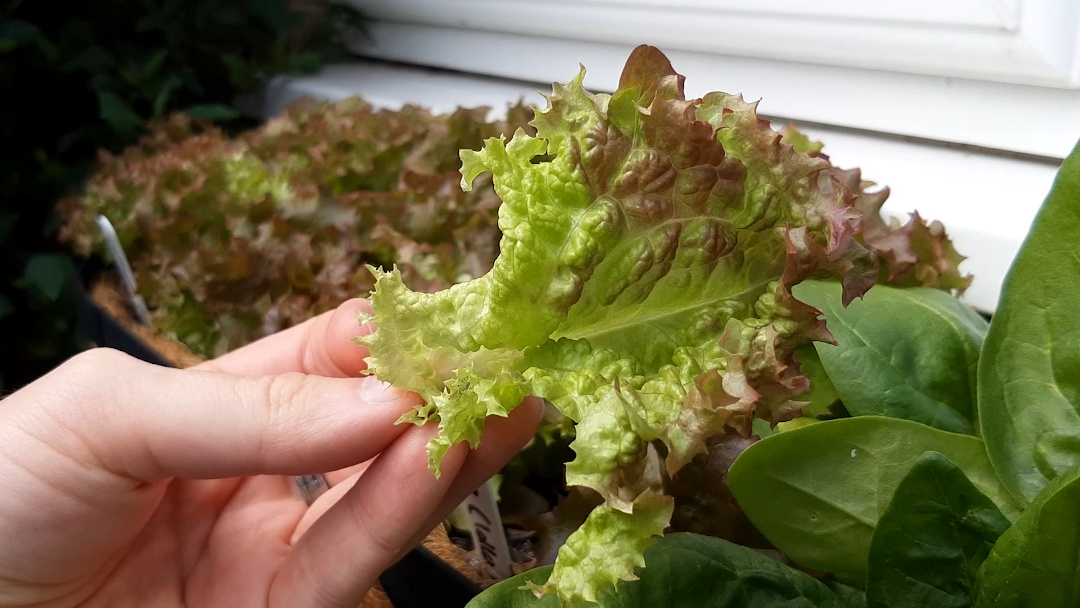
A simple side salad
Tear up your harvested leaves and give it a quick wash under cold water.

Tip onto a clean, dry, tea towel. Wrap up and shake to get off most of the water. Then, mix in with anything/all of the following if you have them:
- Spinach
- Spring onions, chopped up
- Garlic chives, finely cut
To really jazz it up, add a pinch of sea salt and a teaspoon of olive oil.

Article written on Apr 22, 2020
Updated Jun 15, 2020
